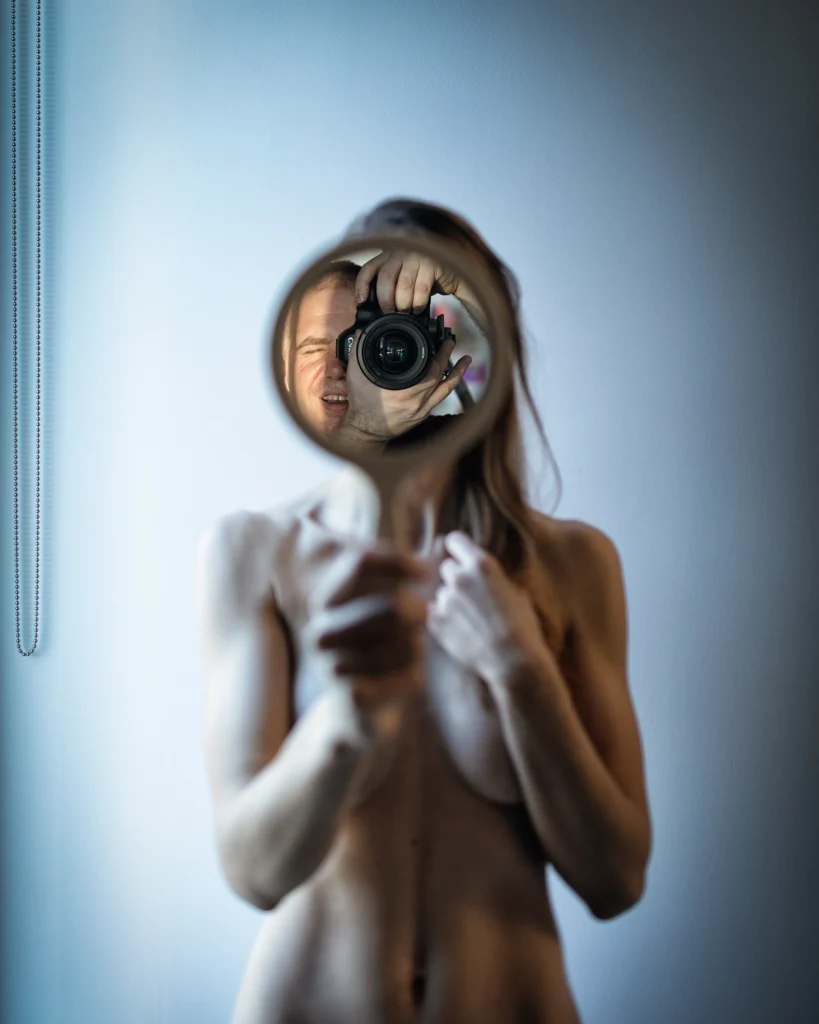Self-portraiture has been a cornerstone of artistic expression for centuries. Long before photography, painters such as Rembrandt and Van Gogh turned the brush on themselves, using their own likenesses to experiment with technique, emotion, and identity. The invention of the camera in the 19th century allowed artists to continue this tradition in a new medium, with early photographers like Robert Cornelius capturing what is considered the first photographic self-portrait in 1839.
As photography evolved, so did self-portraiture. The genre became a playground for self-exploration, allowing photographers to push boundaries, confront their insecurities, and craft narratives that would not have been possible with a conventional portrait subject.
Notable Photographers in Self-Portraiture
Many renowned photographers have used self-portraiture as a means of artistic exploration, leaving behind a legacy of deeply personal and evocative imagery. Here are a few worth exploring:
Man Ray – An early surrealist photographer who used self-portraiture to explore experimental techniques and artistic identity. Website
Cindy Sherman – Known for her conceptual self-portraits, Sherman transforms herself into different personas, questioning identity, stereotypes, and societal expectations. Website
Francesca Woodman – Her ethereal and haunting self-portraits convey themes of fragility, movement, and the passage of time. Website
Lee Friedlander – His self-portraits are often playful and unconventional, incorporating reflections and shadows to create layered compositions. Website
Vivian Maier – A street photographer whose self-portraits often feature her reflected in mirrors and windows, offering an intimate yet distant view of herself. Website


The Struggle of Self-Portraiture Beyond the Norm
In today’s world, self-portraiture is often dominated by young, conventionally attractive women, shaping an online visual culture where beauty is currency. For a 40+ year old, balding, overweight man, the landscape can feel uninviting. How do you create self-portraits that hold interest in an era of perfect skin, sharp jawlines, and meticulously curated aesthetics?
The first step is embracing authenticity. Your face, your body, and your experiences tell a story that is uniquely yours. Instead of striving for conventional beauty, focus on character. Use light and shadow to emphasize texture, embrace unconventional angles, and explore the rawness of self-perception.
Another approach is humor. A touch of self-deprecation, playful setups, or exaggerated expressions can turn an otherwise standard portrait into something memorable and engaging. Consider the absurd—juxtaposing yourself in unexpected locations or situations to create something visually compelling.
Lastly, take inspiration from the masters. Cindy Sherman didn’t adhere to societal beauty standards in her self-portraits; she used transformation to craft new identities. Lee Friedlander played with distortion and perspective. Vivian Maier used reflections to add depth. There is no rule that self-portraiture must be flattering—it must only be honest.
So, if you’re staring into your camera wondering how to make yourself interesting in a world of beautiful imagery, remember: storytelling, character, and creativity will always triumph over conventional beauty. The most compelling portraits are those that say something about the person behind the lens—and that’s something no one else can replicate.